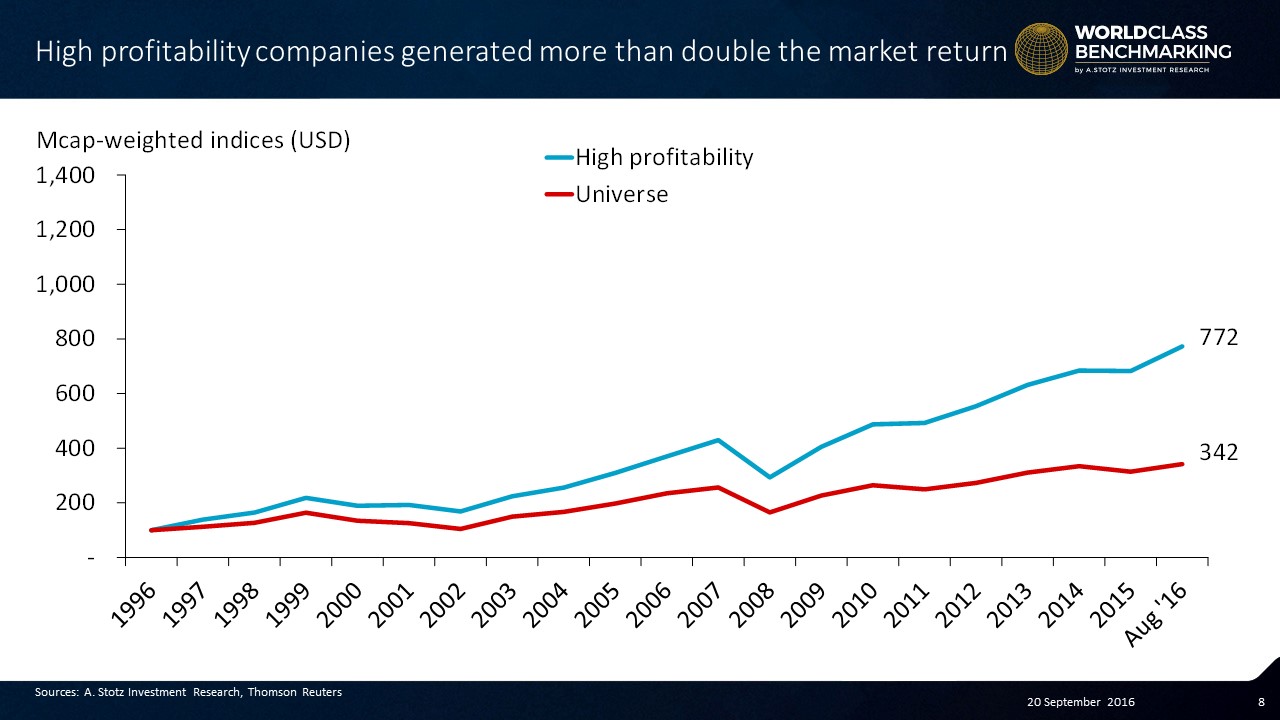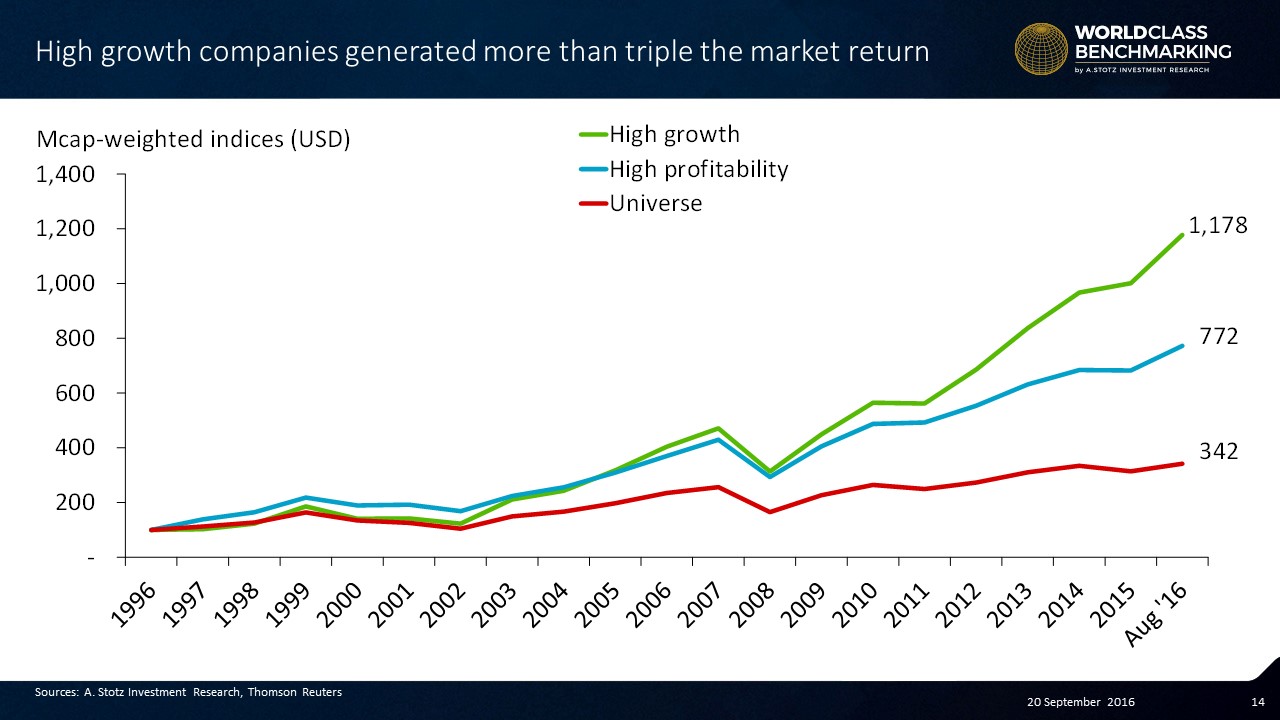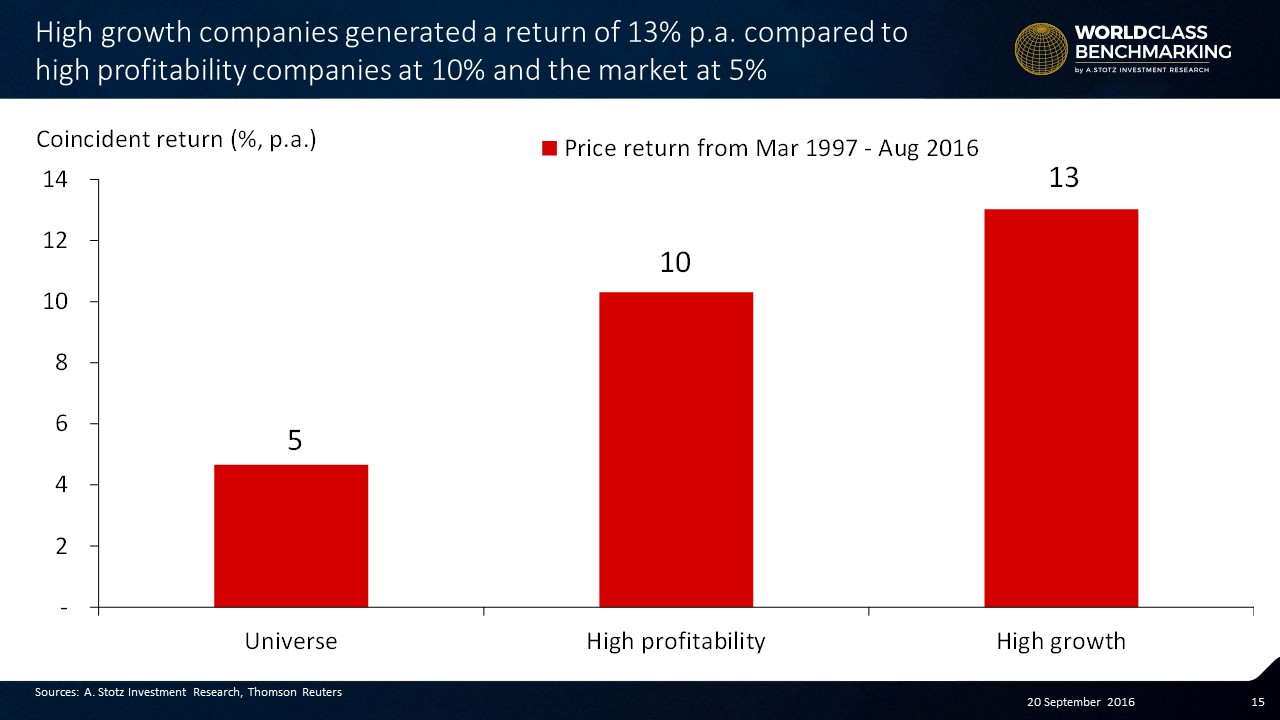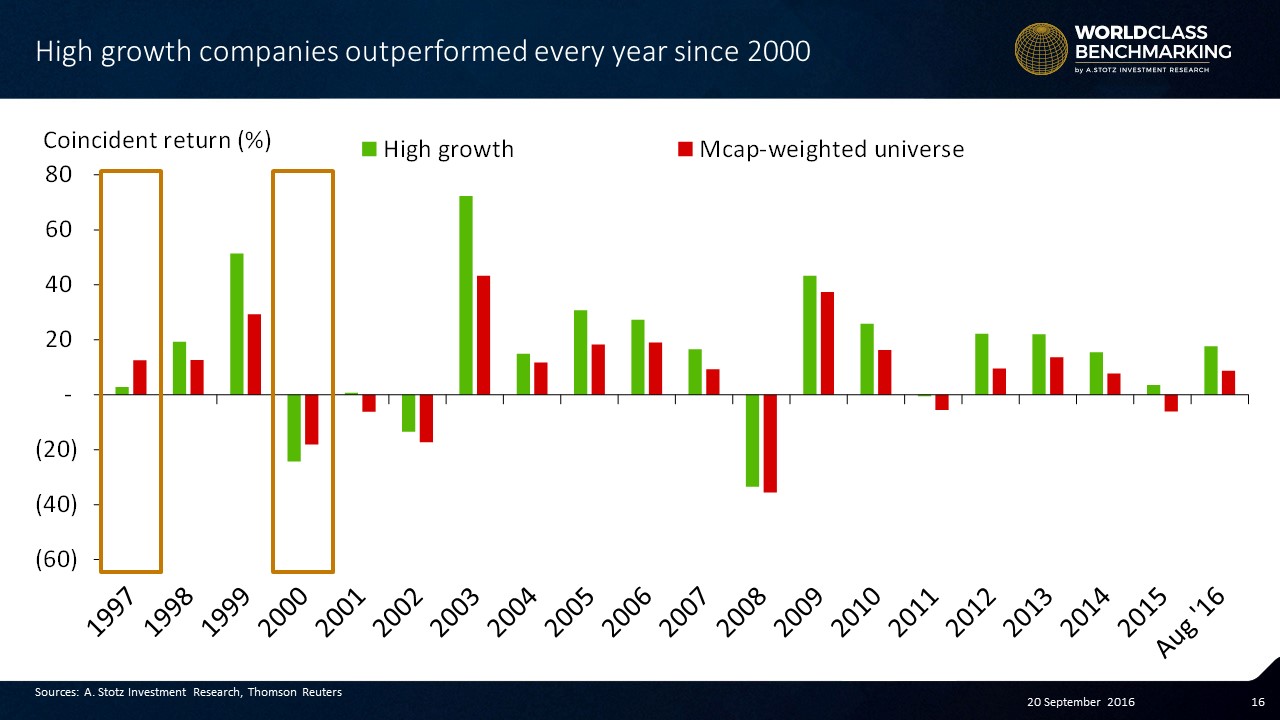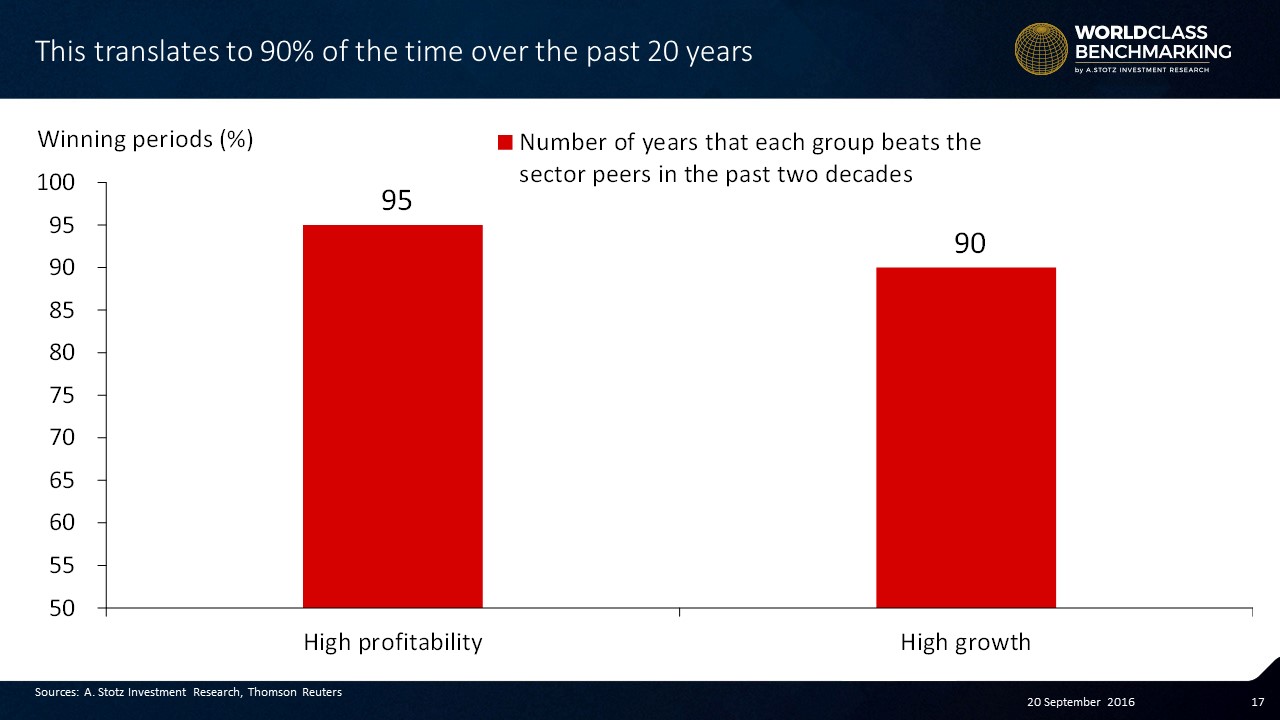What Is More Important, Profitability or Growth?
Watch the video with Andrew Stotz or read below about how we use World Class Benchmarking to analyze a company’s financial performance.
This Academic-Style Research is going to give you further insights to the World Class Benchmarking we use to analyze a company’s financial performance at A. Stotz Investment Research. We focus on Profitable Growth which is at the top of our financial performance triangle. You’ve come to know our World Class Benchmarking by this triangle which we discussed more here.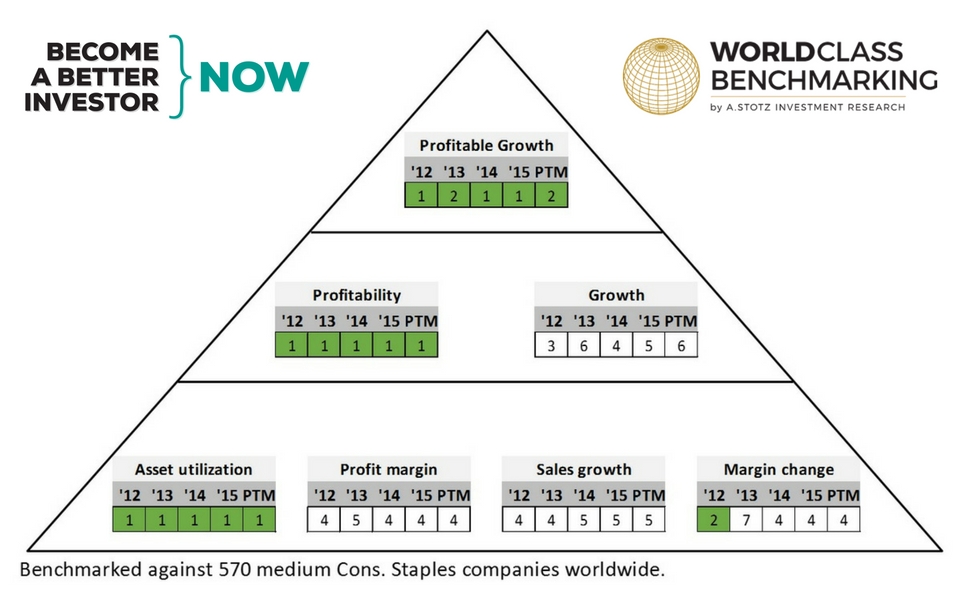
Executive Summary
In this study, we decided to see whether profitability or growth had a greater effect on the value increase of a business, measured by price performance. So we collected data on a large set of global stocks and ran the numbers against them for a given 20-year period. We found that “high profitability” companies generated more than two times the market return, and “high growth” companies returned more than three times the market over the past 20 years. “High profitability” companies beat the market 95% of the time; and “high growth” companies, 90% of the time. Read on to learn the details.
We found that “high profitability” companies generated more than two times the market return, and “high growth” companies returned more than three times the market over the past 20 years. “High profitability” companies beat the market 95% of the time; and “high growth” companies, 90% of the time. Read on to learn the details.
What Is More Important for Price Performance, Profitability or Growth?
Data
We started with our World Class Benchmarking database consisting of 27,000 global companies over a 20 year time period (March 1997-August 2016). We removed financial companies and were left with 23,500 non-financial companies.
Then we removed 4,000 stocks that did not have the fundamental data needed for the study. Each year we only included companies with a market capitalization greater than $500 million. To be included in any one year, the company needed to have full-year price data in that year.
To eliminate outliers, we excluded stocks that had a price rise of more than 500% or a loss of more than negative 80% in any one year. This left us with, on average, 4,500 stocks per year (min = 1,500 and max = 8,400).
Methodology
We used return on assets (ROA) to measure profitability, and the companies in the top three deciles that had the highest ROA in each year we called “high profitability” companies. To test across sectors and size, we created our “high profitability” portfolio by combining the top three deciles that had the highest ROA in every sector and from each size group.
We measured the 1-year price performance ending at each company’s closing period compared to 1 year before. Our “high growth” portfolio included an average of 1,700 stocks per year (min = 400 and max = 2,900).
- Hypothesis 1: High profitability in any one year also leads to coincident price outperformance in that year
Results
Right away we found that the “high profitability” portfolio outperformed the general universe by more than 100%. Note that we show coincident return in the charts below, i.e. the price return we measure is from the same year that the company had high profitability. This research doesn’t try to show any leading indicator, but instead, the relationship between good financial performance and market value increase.
This research doesn’t try to show any leading indicator, but instead, the relationship between good financial performance and market value increase.
The “high profitability” portfolio showed a coincident return that was double that of the general market, at 10%.
2003 was the only year the portfolio underperformed the market, which is quite an impressive record.
The “high profitability” portfolio beat the market 19 out of 20 years, or 95% of the time.
Methodology (cont.)
We used earnings-per-share (EPS) growth as our measure of growth, and the companies in the top three deciles that had the highest EPS growth in each year we called “high growth” companies. To test across sectors and size, we created our “high growth” portfolio combining the top three deciles that had the highest EPS growth in every sector and from each size group.
We measured the 1-year price performance ending at each company’s closing period compared to one year prior. Our “high growth” portfolio included an average of 1,300 stocks per year (min = 400 and max = 2,500).
- Hypothesis 2: High growth in any one year also results in coincident price outperformance in that year
Results
The “high growth” portfolio greatly outperformed both the “high profitability” portfolio and the general market as well. In fact, it beat the former by 53% in the long run and more than tripled the market’s overall return.
Remember, that we show coincident return in the charts below, i.e. the price return we measure is from the same year that the company had high growth.
The growth portfolio beat its profitable counterpart on an annual average basis by 3 percentage points. That 3% amounts to a large difference over a 20-year period.
Only in the first year, 1997, and in 2000 did the “high growth” portfolio underperform the market.
Still, this was one year more than the “high profitability” portfolio, so the “high growth” portfolio beat the market 90% of the time.
Key Learnings: Why Profitable Growth Matters
- “High profitability” companies generated more than two times the market return, and “high growth” companies returned more than three times the market over the past 20 years.
- “High growth” companies generated a return of 13% on average annually compared to “high profitability” companies at 10%. During that time, the market returned 5%.
- “High profitability” companies beat the market 95% of the time; and “high growth” companies, 90% of the time.
Learn more: High Profitable Growth Companies Saw Value Gains of 10x the Market
What do you think about World Class Benchmarking as a tool to analyze a company’s financial performance? Do you have any questions or comments about it? Would you like to see the Profitable Growth rank of the stocks in your portfolio?
We’d love to hear from you in a comment below.
Feel free to share this article with your friends.
DISCLAIMER: This content is for information purposes only. It is not intended to be investment advice. Readers should not consider statements made by the author(s) as formal recommendations and should consult their financial advisor before making any investment decisions. While the information provided is believed to be accurate, it may include errors or inaccuracies. The author(s) cannot be held liable for any actions taken as a result of reading this article.

